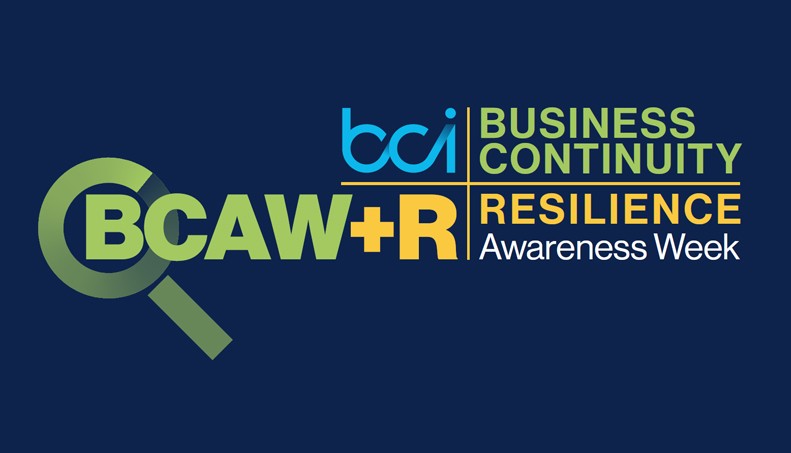Business continuity events and disasters can happen at any moment, be it an outage, a cyberattack, a severe weather event, or a natural disaster. It’s when these crises happen that members often need your services more than ever and depend on your credit union to be there to support them. If the credit union goes dark during disasters or is down during a member’s personal crisis thanks to an outage, then your members are left without the help they need, and trust between member and credit union is severed.
This is why business continuity and disaster preparedness are critical components of the credit union. From having a business continuity plan, to practicing it, to living it, credit unions may not be able to anticipate these events and disasters, but they can be ready whenever they strike. To emphasize the importance of business continuity and educate businesses on how to create and/or strengthen their business continuity preparedness, the Business Continuity Insititute has created Business Continuity and Resilience Awareness Week, which runs this year from May 13th to May 17th.
The Business Continuity Insititute works year-round to provide business continuity training, certification, and education in the hopes of creating a world where every organization is resilient., and Business Continuity and Resilience Awareness Week was created in the aid of that goal. The theme for this year’s event is “Empowering Tomorrow: Building Resilience Today,” with the goal to “inspire a proactive mindset, the development of a resilient culture within organizations that also contributes to broader communities and industries.”
To help businesses reach this goal, the Business Continuity Insitute has laid out six key aspects to focus on throughout the week:
- Proactive preparedness: to move beyond reactive measures and embrace a proactive approach to business continuity.
- Resilience & innovation: Organizations need to be agile in responding to changing circumstances, leveraging technology, and embracing new strategies to ensure continuity in an ever-changing environment.
- Building community resilience: there is a growing need for collaboration and knowledge sharing within the community to collectively enhance resilience on a broader scale.
- Employee engagement: Employee well-being and engagement should be prioritized, as motivated and informed staff contribute significantly to an organization’s ability to face challenges and disruptions.
- Aligning with DEI, environmental, and social responsibility: resilience efforts should align with inclusive and sustainable practices, recognizing the broader impact on the environment and the community.
- Learning from the past, and preparing for the future: learn from past incidents and disruptions, using these experiences to refine and strengthen their business continuity plans.
The BCI is offering webinars every day this week on various topics such as “Why staff should be prioritized in an incident,” “The importance of third-party risk management for operational resilience,” and “Navigating the path to technology integration in resilience.” These webinars also include real-world case studies and many noteable guest speakers. To see the full list of webinars, visit the official page for Business Continuity and Resilience Awareness Week.
Credit unions should take this opportunity to examine their current business continuity plans and see where they might have room for improvement. If you need help assembling and examining your plan in-depth, check out Jim Lawrence’s six-part series, Continuity at the Core, on how to develop and test the perfect business continuity plan.
When writing their plan, credit unions should remember to factor in considerations that may not have been present the last time they edited their business continuity plan. For example, do you have any new technologies, systems, or organizational changes that need to be included? Have any of the processes changed? What about the system for reporting? Have employees, job titles, or structures changed? Is it abundantly clear who should report to whom in a business continuity event?
Remember to consider how external factors such as climate change may impact your plan. With wildfire smoke impacting more and more regions during the summer and stronger temperatures hitting climates unused to such weather, things that may not have been a consideration previously may need to be one now. To learn more about this, Danielle Calideno offers some great examples of when credit unions needed to think on their feet in such situations and why your credit union should learn from their experiences.
And finally, remember that even the most well-developed business continuity plan is not complete without exercises and practices meant to test the plan. Tabletop exercises can be a great way to measure the true resilience of your plan and see where there might be any confusion or any aspects that may have been overlooked. Your staff and teams should be considered in both the creation and testing of the plan. If they don’t understand it, they won’t be able to follow it in the event of a disaster.
Don’t let Business Continuity and Resilience Awareness Week slip by without using the resources and opportunities provided to better prepare your plan, staff, and credit union for the unexpected. If you wait until the incident occurs to build the plan, you risk more damage to the credit union, longer downtimes, and the loss of member trust (and accounts).






























































